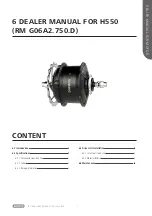
Instructions
2
Important instructions which concern technical safety and protection of persons are emphasised as shown
below.
Danger:
This refers to working and operating procedures which must be complied with in order to rule out
the risk to persons.
Caution:
This refers to working and operating procedures which must be complied with in order to prevent
damage to or destruction of material.
Note:
Explanations useful for understanding the working or operating procedure to be performed.
Assembly of pipes
Danger:
No pipes may be bent.
Risk of breakage!
Fitting flat seals / gaskets
Flat seals / gaskets are often inserted with sealing agents or adhesives to make fitting them easier or to
achieve better sealing. Flat seals may slip in operation due to the “sewing-machine” effect, in particular if
they are used between parts with different rates of linear expansion under heat (e.g. aluminium and cast
iron), and leaks may then occur.
Example:
The cap of the front crankshaft seal. If a sealing agent or an adhesive is used here the flat seal will move
inwards in the course of time as a result of the different expansion rates of the materials. Oil will be lost, for
which the shaft seal may be thought to be responsible.
Flat seals / gaskets can be fitted properly only if the following points are observed:
D
Use only genuine MAN seals / gaskets
D
The sealing faces must be undamaged and clean
D
Do not use any sealing agent or adhesive
−
as an aid to fitting the seals a little grease can be used if
necessary so that the seal will stick to the part to be fitted
D
Tighten bolts evenly to the specified torque
Fitting toric seals
D
Use only genuine MAN toric seals
D
The sealing faces must be undamaged and clean
D
Always wet toric seals with engine oil before fitting them
epcatalogs.com
Summary of Contents for D 2842 LE 409
Page 1: ...e p c a t a l o g s c o m...
Page 2: ...e p c a t a l o g s c o m...
























